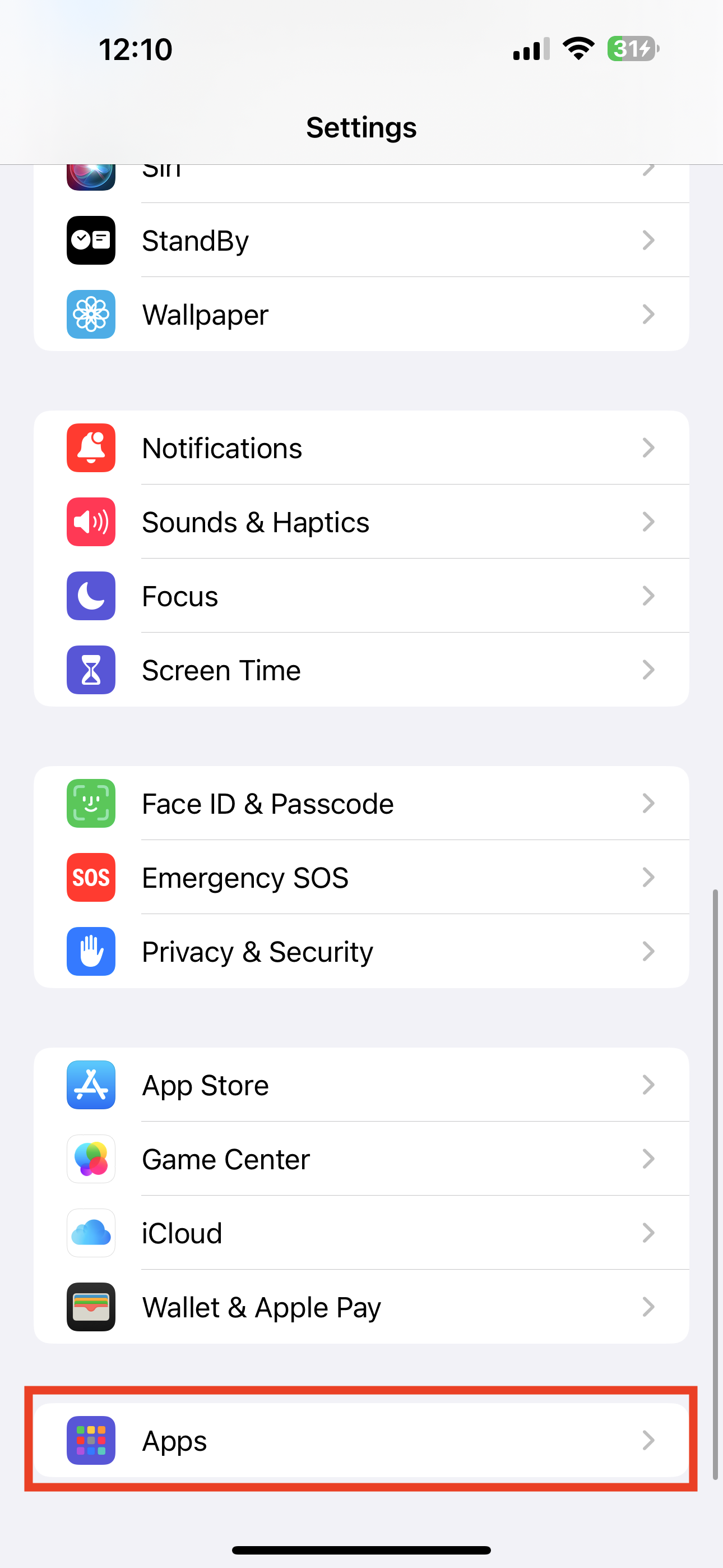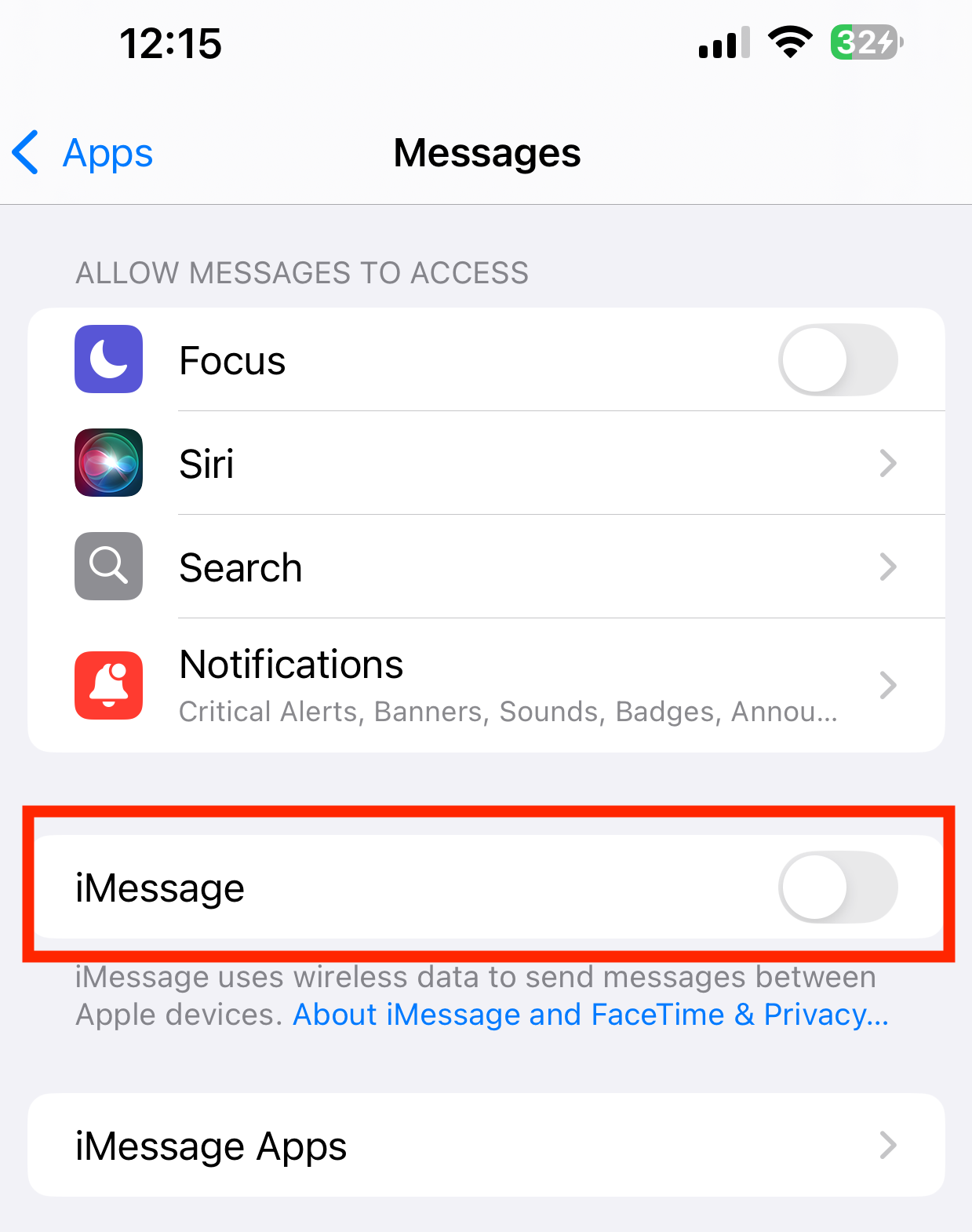Text Archiving: Disabling iMessage on iOS Devices
What is iMessage? Why does it need to be Disabled?
Apple iOS products use an enhanced form of text message that doesn’t natively rely on the Short Message Service (SMS) or Multimedia Messaging Service (MMS) that most text messages use. Their enhanced format allows for interactive reactivity, read receipts and end-to-end encryption of messages. These are known as iMessage texts, as opposed to standard SMS/MMS texts.
The difficult in archiving iMessage texts lies in that last point: Apple’s iMessages are end-to-end encrypted and transmitted through Apple’s cloud service, rather than via mobile operators. This means they cannot be captured and archived by the carrier’s network text archiving service, which is what DataCove’s text capture service relies on. For organizations that need to archive text messages, it is necessary to disable the iMessage feature. By disabling iMessage, all texts will be delivered as SMS/MMS via the mobile carrier network and successfully archived.
An iMessage text can be quickly distinguished from an SMS/MMS text by the text bubble’s color. Blue means the message is an iMessage-dispatched message, while green means it is a SMS/MMS text.
There are several different ways to disable iMessage for employees.
Use a Mobile Device Management (MDM) or Enterprise Mobility Management (EMM) platform
Use Apple Business Manager
Block iMessages on individual employee devices
This guide covers how to individually disable iMessage on employee devices, with some pointers for MDM provider documentation.
Disabling iMessage in on Individual Devices
To disable iMessage on an individual device, on the iPhone (or iPad or other mobile device), start by clicking on the iPhone Settings application, whose icon is below.
From the Settings page, scroll down and click on Apps.
This will open a list of all installed applications on the device. Scroll down and click Messages.
Find the iMessage setting, and toggle it to “Off”.
All messages will be sent and received via SMS/MMS on this device.
Note: Often, users will have several devices that receive iMessages from the same account (iPhone, Mac, etc). In these cases, iMessage must be disabled manually on all devices. If not, iMessages may still be received on connected devices and will not be archived.
Disabling iMessage at Scale
As individual device deactivations of the iMessage service can be both tedious, time consuming to wrangle the users in and lastly, fungible since a user could theoretically change the setting back if they about it, Mobile Device Management (MDM) solutions really are the best method to not only change this setting across the entire ecosystem of managed devices, but also lock it so that the end user cannot change it back.
As there are many different MDM providers out there, the best documentation for achieving this disablement of iMessage is found with each respective provider. For the most popular ones we encounter daily, please see our quick links below over their guidance.
JAMF (often requires iCloud disablement to leave SMS on but turn iMessage off): https://learn.jamf.com/en-US/bundle/jamf-now-documentation/page/Restrictions_for_Apple_Devices.html
Microsoft InTune: https://learn.microsoft.com/en-us/mem/intune/configuration/device-restrictions-ios#settings-apply-to-automated-device-enrollment-supervised-2
Apple Business Manager: https://support.apple.com/guide/apple-business-manager/customize-user-access-apps-services-axm53xk34bq/web





